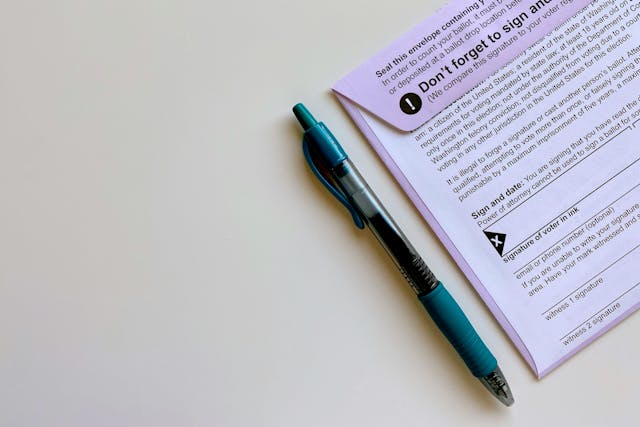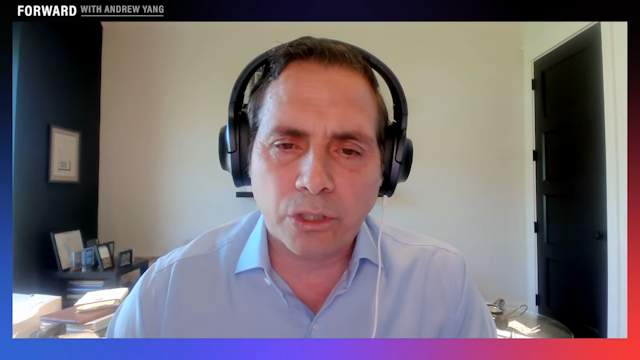In The End, Low Voter Turnout Comes Down to Competitiveness in Elections

No matter what political ideology a voter identifies with, every single election comes down to one thing: voter turnout. If voters don't go to the polls to cast ballots, their party affiliation, or lack thereof, doesn't matter. But which states have the worst turnouts and why?
According to Nonprofit Vote, a group that works with nonprofit organizations to increase voting opportunities,in 2010, there were about 91 million votes cast across the country, which means that approximately 42 percent of eligible voters cast ballots. When looking at midterm elections over the last 30 years, this number has remained largely unchanged. But when compared with the 2008 presidential race, the 2010 midterm election saw voter participation drop off sharply.
However, when compared with other countries around the world, America's turnout of 40-60 percent (depending on the election cycle) pales in comparison to countries such as Australia, Austria, Belgium, Chile, Italy, and Sweden, who have voting rates from 70-90 percent.
While 2008 saw the highest voter participation in three decades, there were about 30 percent fewer ballots cast in 2010. However, this type of drop is not uncommon in midterm election years.
Despite the fact that the entire House of Representatives and a third of the Senate is up for re-election during the midterms, decreased national interest, press coverage, and voter mobilization efforts in midterm years equate to lower turnout as voters turn their attention closer to home.
Many of the nation's governors are elected during the midterms than in presidential election years, as well.
Some states fared better than others in regards to voter turnout during the 2010 election. The 5 states with the lowest voter turnouts were:
5. New York - 35.6%
4. Utah - 35.4%
3. Tennessee - 35%
2. Texas - 32%
1. District of Columbia - 28.9%
In 2012, a total of 58.7 percent of voters cast ballots in what was a contentious presidential race, despite Hurricane Sandy having a significant impact on polls in New York and New Jersey, as well as a myriad of new voting laws. And while the 2012 election didn't reach the record voter participation of 2008, it was still a larger turnout than many elections in the last 4 decades.
The 5 states that had the lowest voter turnout in 2012 were:
5. Arkansas - 51%
4. Texas - 50.1%
3. Oklahoma - 49.6%
2. West Virginia - 46.8%
1. Hawaii - 44.5%
The primary reason for low voter turnout, regardless of state or election, is a lack of competitive races. For example, in New York, in 2010, both Senate seats and the gubernatorial races were all landslide victories with more than a 20-point spread between candidates.
Similar to the way that more people will play the lottery as the jackpot gets bigger, when races are closely contested, voter turnout is larger. During the 2012 election, the presidential campaigns really only invested largely in 10 states, mostly swing states. Thus, voter turnout was higher in these states.
The other 40 states, which are either solidly red or blue, didn't receive much attention from candidates. Voters, therefore, were not as interested in participating.
Beyond that, the states with the lowest voter turnouts also put the most burden on voters. Restrictive voting laws in many states make registering to vote difficult or cumbersome, such as in Hawaii, or shut out a sizable and growing percentage of the voting population from participating in the first integral stage of the voting process -- the primary -- where over 90 percent of congressional races are decided in noncompetitive districts.
Conversely, the states that had the best voter participation are also the states that made it easiest for voters to cast their ballots. Half of the top 10 states with the highest turnouts have some form of same-day registration, with an average voter turnout of 71.3 percent.
Several of the states with the highest turnouts also have early voting programs in place, allowing people more flexibility and reducing lines at polls. Washington and Oregon, which consistently have high voter participation numbers, use a vote-by-mail system almost exclusively, which helped rank them third and fifth, respectively, in participation for the 2010 election and thirteenth and fourteenth, respectively, in 2012.
Whether it is over 200 years of gerrymandering, election laws that give two parties exclusive access to the process, or voting restrictions that make it harder for people to register to vote and cast a ballot, at the end of the day it comes down to competitiveness. Two private organizations, the Republican and Democratic parties, continue to do what they can to keep elections in the U.S. noncompetitive so they can keep going with politics as usual -- and what is left is a disenchanted electorate that thinks nothing will ever change.
Photo Credit: Rob Crandall / Shutterstock.com



